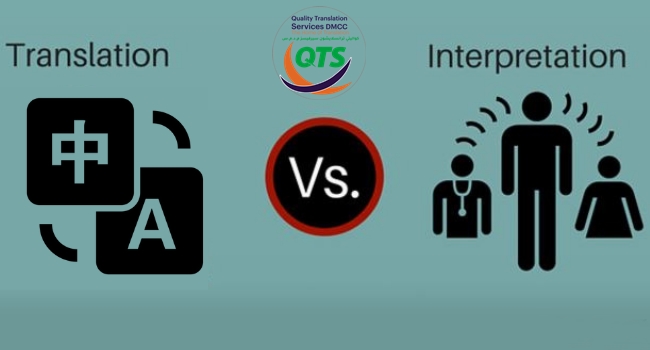What Is the Difference Between Translation and Interpreting?
Translation and interpreting are two distinct language services that serve different purposes. While both require a high level of language proficiency and cultural awareness, they differ in their method of delivery and the type of communication they facilitate. Therefore, it is crucial to know the difference between translation and interpreting when choosing the right language service.
If you are looking for professional translation services in Dubai, we are your one-stop solution!
Unraveling the Distinction: A Comprehensive Guide on Translation vs interpreting:
1) Timeframe
The timeframe for translation and interpreting differ as translation can occur before or after the spoken or written word is produced, while interpreting is done in real-time during communication. Translation allows for revision and editing, while interpreting requires immediate and seamless message rendering from one language to another.
For example, a foreign delegation visits a company and a business meeting is scheduled. During the meeting, the visitors may need to present their ideas and thoughts in their native language. In this scenario, an interpreter would be required to facilitate communication in real time by converting speech from one language to another. In contrast, a translator may be needed to translate written documents, such as contracts or presentations, into the target language for future reference.
In this example, the key difference between translation and interpreting is the timeframe and mode of communication. Interpreting is required for real-time spoken communication, while translation is needed for written documents that will be used in the future.
2) Tools
When it comes to translation and interpreting, the tools used can significantly impact the quality and accuracy of the final result. The most commonly used tools for translation include computer-assisted translation (CAT) software and translation memory (TM) systems. These tools can help translators work more efficiently and accurately by providing suggestions and offering access to previously translated content. Additionally, CAT tools and TM systems can help ensure consistency in terminology and style across multiple documents.
In the field of interpreting, tools may include specialized interpreting equipment such as headset and microphone systems, as well as conference equipment for remote interpreting. Interpreting equipment should be chosen based on the type of interpretation being performed, the size of the audience, and the environment in which the interpretation will take place.
3) Preparation
In interpreting, preparation may involve:
- Researching the subject matter.
- Attending a briefing or meeting with relevant parties.
- Familiarizing yourself with the terminology and specialized terms used in the industry or field.
For translation, preparation may include the following:
- Conducting a thorough review of the source material.
- Researching any unfamiliar terminology.
- Consulting with subject matter experts to ensure that the translated document accurately reflects the source material.
In both translation and interpretation, adequate preparation is vital to delivering a successful outcome and ensuring that the final result accurately reflects the source material’s intended meaning and cultural context. Therefore, choosing the right language service, preparation is a crucial step.
4) Purpose
The purpose of translation and interpreting services is a crucial factor that sets the two apart. Translation focuses on the written word, translating written documents from one language to another, whereas interpreting deals with the spoken word, conveying verbal communication between two people who speak different languages.
Understanding the purpose of the translation or interpreting service is important as it informs the approach taken to ensure the best possible outcome. This could involve selecting the most appropriate tools, preparing adequately, and considering cultural differences.
For example, a company preparing to launch a new product in a foreign market may need to ensure that their product information, marketing material and other communication accurately reflect their brand image and intended message.
In this scenario, it may be important to select a translator who has a firm understanding of the language as well as the cultural norms and values of the target market. This will help ensure that all translated materials effectively convey the intended message.
Alternatively, if the company is hosting an international conference, their goal may be to facilitate communication between attendees with different native languages. In this scenario, an interpreter who is able to quickly and accurately translate spoken dialogues may be required.
In both scenarios, it is clear that a thorough understanding of the purpose of translation or interpreting can greatly impact the success and effectiveness of the final outcome.
Conclusion:
Whether its translation or interpreting, both are crucial for effective communication between people who speak different languages. Understanding the difference between translation and interpreting is essential when choosing the right language service to meet your needs.
Connect with us if you are looking for professional translation services in Dubai.

